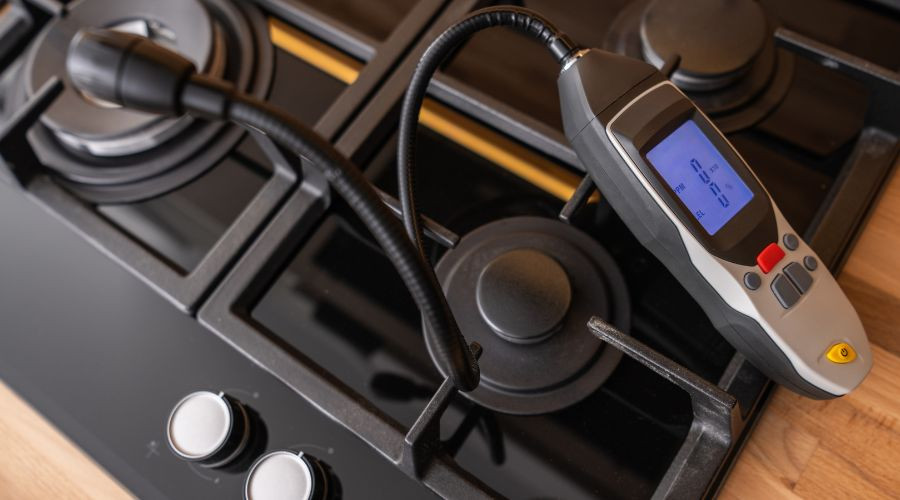Stay Safe From Dangerous Gas Leaks by Identifying Them Quickly
Homeowners concerned about gas leaks should be aware of the early warning signs to protect their families and property. Identifying gas hazards and natural gas risks promptly can prevent dangerous situations from escalating. This guide offers expert insights into recognizing potential gas leaks, understanding their risks, and taking immediate action to ensure home safety. By staying informed, homeowners can safeguard their living spaces and maintain peace of mind.
Strange Smells or Sounds
 Recognizing the warning signs of a gas leak is crucial for ensuring home safety and preventing potential disasters. One of the most immediate and noticeable indicators is an unusual odor. While natural gas itself is odorless, utility companies add mercaptan—a sulfur-based compound—to create a distinct rotten egg smell, making leaks easier to detect. Any unexpected sulfurous scent in the home should never be ignored.
Recognizing the warning signs of a gas leak is crucial for ensuring home safety and preventing potential disasters. One of the most immediate and noticeable indicators is an unusual odor. While natural gas itself is odorless, utility companies add mercaptan—a sulfur-based compound—to create a distinct rotten egg smell, making leaks easier to detect. Any unexpected sulfurous scent in the home should never be ignored.
In addition to odors, gas leaks often produce audible cues. A hissing, whistling, or roaring sound near gas lines or appliances can indicate pressurized gas escaping through a crack or faulty connection. The intensity of these sounds may vary depending on the severity of the leak, with louder noises often signaling more significant issues. For individuals who may not be able to detect mercaptan due to olfactory fatigue or medical conditions, it is essential to be vigilant for any unusual sounds. Taking immediate action in response to these warning signs is crucial to prevent hazardous exposure and ensure safety within the household.
Higher Gas Bill
 An unexpectedly high gas bill is often one of the most overlooked signs of a gas leak in a home. When natural gas escapes due to damaged pipes or faulty connections, the meter records this wasted fuel, causing utility costs to rise even though household consumption remains unchanged. This financial red flag should not be ignored, as monitoring gas bills can help identify leaks and potentially prevent costly repairs or hazardous situations.
An unexpectedly high gas bill is often one of the most overlooked signs of a gas leak in a home. When natural gas escapes due to damaged pipes or faulty connections, the meter records this wasted fuel, causing utility costs to rise even though household consumption remains unchanged. This financial red flag should not be ignored, as monitoring gas bills can help identify leaks and potentially prevent costly repairs or hazardous situations.
Gas leak detection often begins with scrutinizing monthly bills rather than noticing odors. Homeowners should track their gas consumption patterns and look for any unexplained increases in their bills. While seasonal changes may cause fluctuations, sudden spikes without a corresponding change in usage should raise concern. Many utility companies offer online tools or apps to help homeowners track their gas usage, making it easier to spot unusual trends.
If there’s a significant rise in the bill without changes to heating habits or appliance use, contacting the gas provider is essential. They can check the meter’s accuracy and determine if a professional inspection is needed. Detecting leaks early through bill monitoring helps prevent both financial waste and potentially dangerous situations. Addressing small leaks promptly ensures they don’t grow into more serious hazards that could jeopardize the safety of the household.
Physical Symptoms
Recognizing the physical symptoms of a gas leak is crucial for the safety of both humans and pets in the household. Natural gas exposure affects the body in various ways, often resembling common illnesses, making it difficult to identify. The body typically responds to gas leaks through respiratory distress and neurological symptoms.
Common symptoms of a gas leak in people include persistent headaches, dizziness, and fatigue that doesn’t improve with rest. Other signs may include throat irritation, eye burning, and difficulty breathing, even with minimal physical activity. Nausea and vomiting are also frequent as the body tries to expel the toxins. According to the CDC, around 50,000 Americans visit emergency rooms each year due to carbon monoxide poisoning, which shares many symptoms with natural gas exposure. If these symptoms improve when leaving the home but return upon re-entering, it could indicate a gas leak.
Pets often show signs of gas exposure before humans do. Animals may exhibit unusual lethargy, restlessness, or respiratory problems such as coughing, wheezing, or labored breathing. Other signs include vomiting, loss of appetite, or disorientation. Smaller pets with faster metabolisms may show symptoms more quickly than humans, acting as unintentional early warning systems for gas leaks in the home.
About Ira Hansen and Sons Plumbing
Ira Hansen and Sons Plumbing has been a trusted name in the Reno-Sparks area since 1986. As a family-owned and operated business, they are committed to delivering honest, high-quality plumbing solutions with integrity. From drain cleaning to sewer line repairs, their experienced team provides personalized service, ensuring each job is completed with care and professionalism. With decades of expertise and a dedication to customer satisfaction, Ira Hansen and Sons Plumbing remains a top choice for reliable plumbing services in the Truckee Meadows region. Call them for top-notch gas line repair and installation in Reno, NV!



